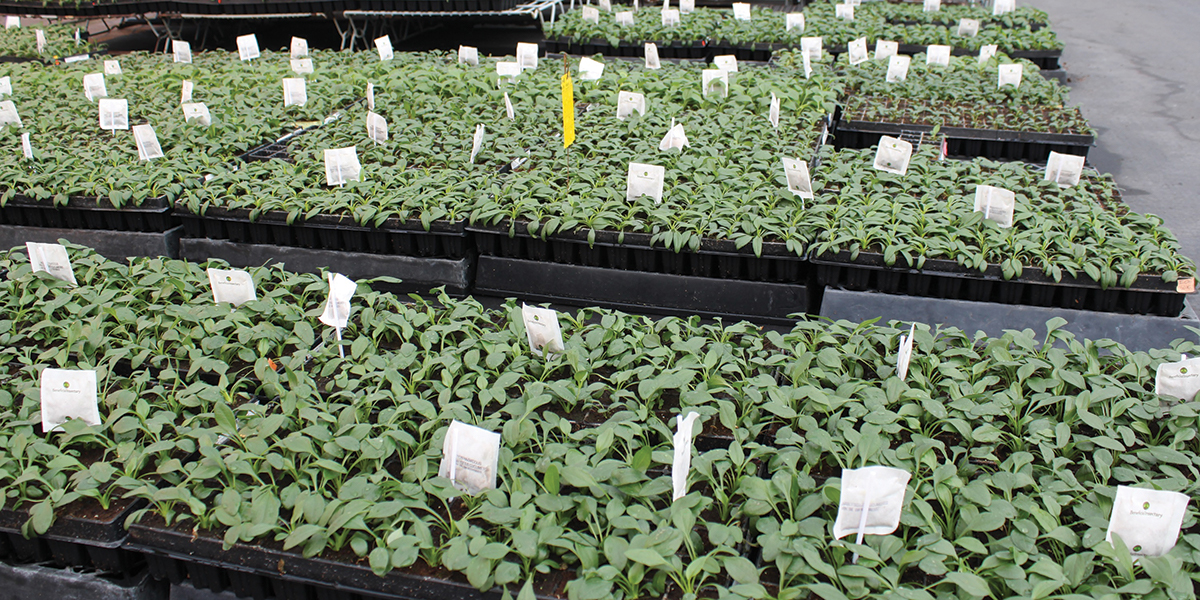This article was originally published in the July 2019 issue of Greenhouse Grower magazine.
Nature's Army: Biocontrols
Integrating beneficial insects into crop production can reduce pesticide use and elevate plant health.
A shifting mindset in the field is making way for nature’s pest and disease army — special agents whose lifestyles center on eating the very insects that threaten crops. Biocontrols are “all-natural population regulators,” explains Michael Brownbridge, research director, horticulture production systems, Vineland Research & Innovation Centre, Ontario, Canada.
Biocontrols are a preventive tool for growers who want to reduce the use of pesticides, or at least take a more targeted approach by eliminating broad-spectrum materials from their repertoire in favor of specific, low-residual products used as a secondary source of control. “If we reduce certain broad-spectrum pesticides, there is space for natural enemies to come into a crop and thrive,” Brownbridge explains.
It’s a different way of operating for many growers.
“We have to think about control in a totally different manner,” Brownbridge says. “There aren’t exact biocontrol alternatives for every chemical agent. You can’t just extract chemical X from your program and replace it with Biocontrol Y. Using biocontrols requires a whole change of approach to get results.”
Growers are being forced to reconsider how they control pests and diseases because of regulatory pressure and plants’ increased resistance to certain materials. Not to mention, consumers are demanding products without chemicals. They want to know what substances were used on the plants they buy at the garden center. Also, a widespread concern about pollinators and removal of neonicotinoids from the market means growers need alternatives to fight damaging pests.
Biocontrols are a viable solution. Brownbridge notes an exponential growth in the demand for these agents, and education so growers can use them effectively.
Ultimately, biocontrols give more power to the plant.
“It’s an exciting area,” Brownbridge says. “It not only addresses how we control pests and disease, but how we can make the plant a more active player in terms of its ability and capacity to reduce pests and disease.”
Here are some factors to keep in mind when incorporating biocontrols into a pest and disease management control program.
Know the Crops — and the Enemies. Map out the lifecycle of crops and consider the entire year, not just a specific part of the growing season like planting or harvest. “Identify when certain activities happen and when specific pest control decisions have to be made,” Brownbridge says. “When do issues appear? What has happened to the crop in the last five years?”
Because crops face different pest and disease issues, treat them individually. Also, consider the range of diseases and issues crops face. “Any crop is not going to have just one pest or one disease — you’re dealing with a range of problems, so the key with biocontrols is to start small with one bullet-proof biocontrol, and then increase your use of these natural agents,” Brownbridge says. “And make sure you know thy enemy. Understanding pests and diseases is important because the biocontrol agents we use are quite specific, and each will regulate a limited range of pests or diseases. There is no one-size-fits-all program.”
Think Prevention. Biocontrols are most effective when introduced as a preventive measure. “You don’t want pest numbers to reach a critical mass before you start using biocontrols,” Brownbridge says. “They work to prevent pest populations from developing and to prevent diseases from getting out of hand.”
For growers, this essentially means releasing biocontrols before pests are identified on crops. Brownbridge says it’s often hard to find the pest or disease when there is a low incidence level. So, overall, you must have a very preventive mindset.”

Give Biocontrols Time. Suzanne Wainright-Evans of Buglady Consulting notices that many growers who try biocontrols and do not have immediate success consider them a failure. But when a chemical product they spray on crops does not work, “Ask the grower, ‘Did you use it again?’ and they’ll probably say, ‘yes,’” says Wainwright-Evans. They’ll spray the same product over and over without getting results, but they’re ready to quit after a hiccup using biocontrols.”
As with introducing any product or process, implementing a biocontrol program takes time.
Wainright-Evans identifies a few key pests that are highly manageable with biocontrols. Those are spider mites, fungus gnats and western flower thrips. “I consider those bread-and butter programs,” she says.
Indeed, there is a learning curve with biocontrol use. “You might go through two or three years of learning,” Brownbridge says. “So, it’s important to start small.”
Consider Complimentary Chemistry. Biocontrols are effective prevention, but sometimes a pest or disease gets out of control before it is detected — and before a biocontrol can effectively manage the problem. Using biocontrols does not mean that synthetic products are off the table. “Sometimes, the conditions are such that a grower can get ahead of a pest or disease problem, and other times they need chemistry to control a problem.”
Brownbridge says that products with a low-residual and narrow spectrum of control are the best accompaniments to biocontrols. “All chemistry will affect biocontrols to a greater or lesser degree, but some are more compatible than others,” he says, adding that some new products that are being developed and registered are designed with this in mind.
What will not work with a biocontrol program is broad-spectrum control products. There is a push to limit the use of these types of materials anyway. A grower that opts for a more targeted control program can use biocontrols in conjunction with complimentary products that will not interfere with nature’s pest-and-disease fighters.
“If you have to use a product, just consider what you are using and understand its impact on your biocontrol program,” Brownbridge says. “Having that knowledge in hand, understand the steps you need to take after you apply the material so you can reintroduce biocontrols after using the chemistry.”
